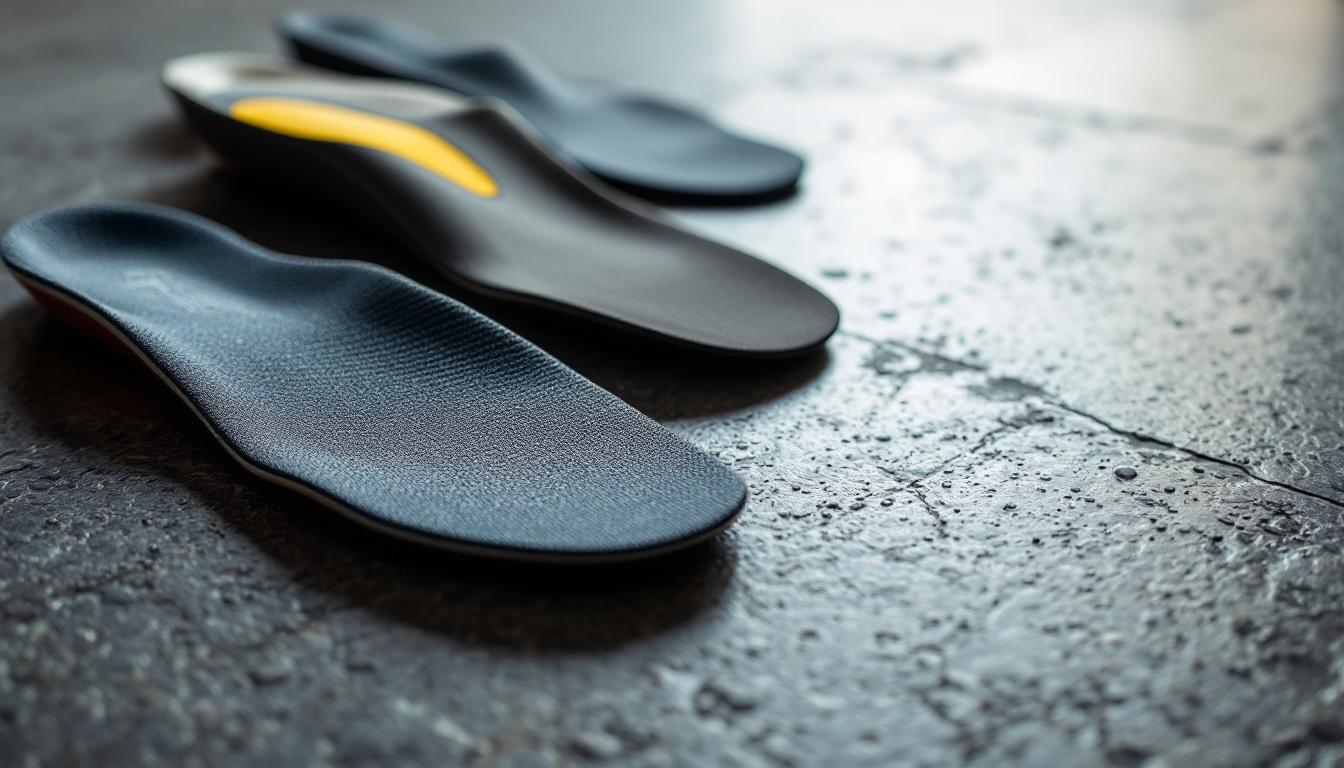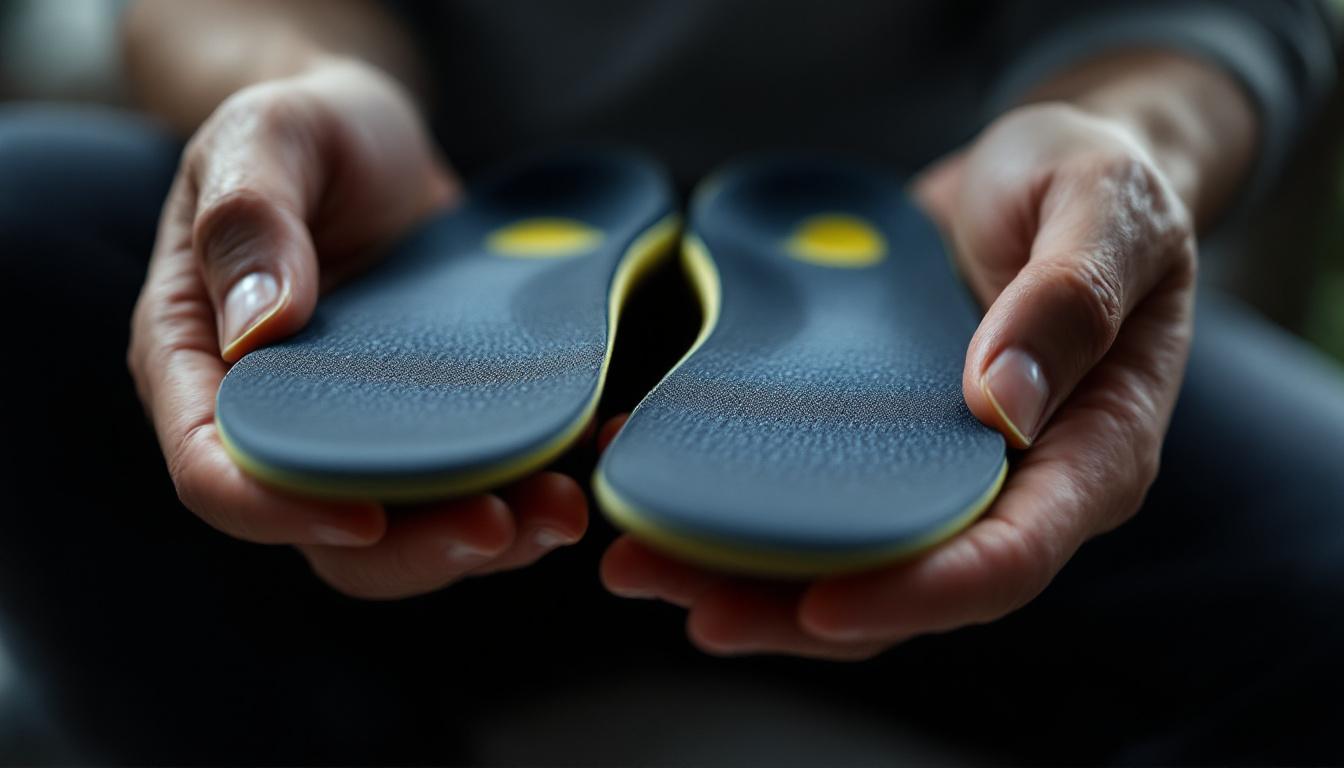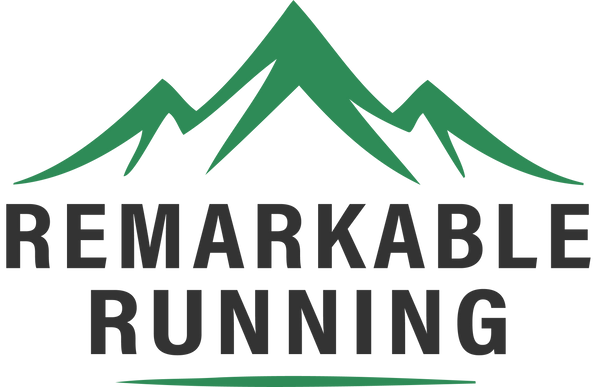
Do You Need Insoles For Running?
Share
Picture this: you lace up your running shoes, hit the track, and by mile two, your feet are protesting louder than your favorite motivational playlist. Sound familiar? If so, you might be contemplating whether insoles could be the secret weapon your feet have been yearning for.
Running insoles aren’t just plush foot cushions - they’re engineered to make your runs smoother, your feet happier, and your performance sharper. But how do you determine if you truly need them? Let’s delve into the essentials of running insoles so you can decide if it’s time to give your feet some extra care.
Understanding Running Insoles Basics
What Are Running Insoles and How Do They Work?
Running insoles are specially crafted inserts that reside inside your shoes, offering additional support, cushioning, and shock absorption. Unlike the standard foam padding that accompanies most running shoes, these insoles are tailored to address specific foot mechanics and issues.

Think of insoles as the unsung heroes that mitigate the impact your feet endure with every stride. By redistributing pressure and stabilizing your foot, insoles help prevent injuries and enhance comfort. They can range from simple cushioned foam to high-tech sensor-embedded devices that analyze your gait. The right insole can also elevate your overall running experience by promoting better posture and alignment, which can lead to improved performance over time.
Many runners report feeling less fatigue and discomfort during and after their runs when using the appropriate insoles, allowing them to train harder and longer.
Different Types of Running Insoles Available
Not all insoles are created equal. There’s a whole spectrum of options, from basic to high-performance. Here are some common types:
- Foam Insoles: The classic cushioning option, great for shock absorption but may lack structural support.
- Orthotic Insoles: Designed to correct foot alignment issues like overpronation or flat feet. These often come prescribed by podiatrists but are also available over the counter.
- Sport-Specific Insoles: Tailored for athletes, these insoles focus on enhancing performance and reducing fatigue.
- Sensor Insoles: The high-tech option. These analyze your foot motion and pressure distribution, useful for both rehabilitation and optimizing sports performance.
Choosing the right type depends on your foot shape, running style, and any existing issues you might have. For instance, runners with high arches may benefit from insoles that offer more arch support, while those with flat feet might need something that provides stability and helps with overpronation.
Additionally, some brands offer customizable options that allow you to mold the insoles to the unique contours of your feet, ensuring a perfect fit. As you explore your options, consider factors like material durability, breathability, and moisture-wicking properties, as these can significantly impact your comfort during long runs.
For those seeking a reliable recommendation, Enertor Running Insoles are highly regarded for their shock absorption and energy return, making them a popular choice among both amateur and professional runners.
Benefits and Indications for Running Insoles
Common Foot Problems That Insoles Can Address
If your feet have ever felt like they’re staging a protest during or after a run, insoles might be the peacekeepers you need. They can help with a variety of common issues:

- Plantar Fasciitis: Insoles with good arch support can ease the strain on the plantar fascia, reducing heel pain.
- Overpronation: When your foot rolls inward too much, leading to knee and hip pain, orthotic insoles can help correct your gait.
- Flat Feet or High Arches: Insoles provide the necessary support and cushioning to accommodate different foot structures.
- General Foot Fatigue: Extra cushioning can reduce the pounding your feet take, especially if you run frequently or on hard surfaces.
Interestingly, about 70% of adult foot orthotic insoles sales are driven by users aged 85 to 95, showing how crucial foot support becomes as we age. But that doesn’t mean younger runners shouldn’t consider insoles if they’re dealing with discomfort or injury risk.
Choosing and Using Running Insoles
How to Select the Best Insoles for Your Needs
Picking the right insole isn’t like grabbing the first pair of socks off the shelf. It requires a bit of detective work:

- Assess Your Foot Type: Are you flat-footed, high-arched, or somewhere in between? Many running stores offer gait analysis to help with this.
- Identify Your Needs: Are you looking for pain relief, improved performance, or both? This will guide your choice between cushioned, supportive, or specialized insoles.
- Consult Professionals: For persistent pain or complex foot issues, a podiatrist can recommend custom orthotics tailored specifically to you.
Remember, the goal is to complement your running shoes, not replace them. Insoles should enhance the shoe’s fit and function, not make it worse.
Proper Maintenance and When to Replace Insoles
Insoles aren’t set-it-and-forget-it gear. Over time, they lose their cushioning and support, turning from foot saviors to foot saboteurs.
Generally, running insoles last between 6 to 12 months, depending on your mileage and running style. If you notice increased discomfort, visible wear, or a change in how your shoes fit, it’s probably time for a new pair.
Keep your insoles fresh by airing them out after runs and washing them according to manufacturer instructions. This not only prolongs their life but also keeps odors at bay—because nobody wants their shoes to smell like a locker room disaster.
Insoles are a simple upgrade that can make a world of difference, whether you’re a casual jogger or chasing your next personal best. So next time your feet start grumbling mid-run, consider if a well-chosen pair of insoles, like Enertor Running Insoles, might be the answer to your running woes.
Check Out Activewear
We'd love you to take a moment to look at our range of active wear clothing to make your next hike even more enjoyable. Check our Performance T-Shirts, Compression Socks, Headwear, Leggings and much more.
